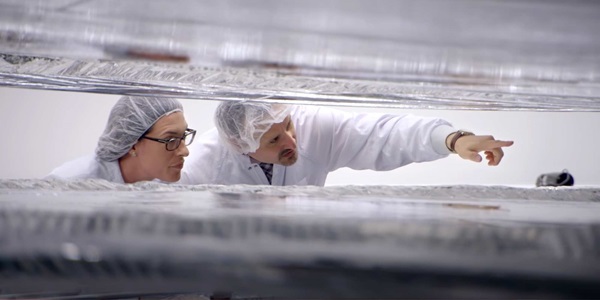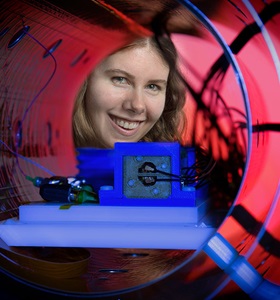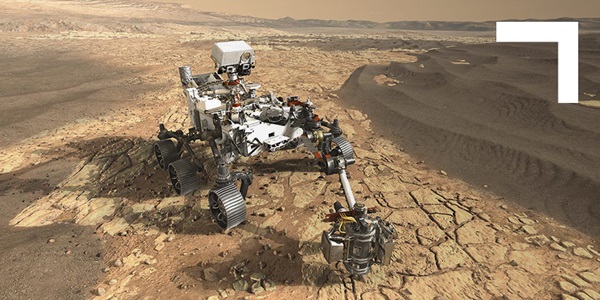Engineering a Future Safe from Hypersonic Threats

The future of warfare includes maneuvering weapons that fly at speeds exceeding Mach 5. Since the early 2000s, the U.S. government has been pursuing the development of these tools – called hypersonic weapons, according to a December 2020 report by the Congressional Research Service.
Unfortunately, the near peer adversaries are catching up in the hypersonic weapons race. In fact, as Science magazine reports, some countries appear to be well on their way to fielding such weapons.
It’s not hard to imagine that the real impact of any tool lies in how it's used — and whose hand the tool is in.
"Hypersonic weapons put the U.S., our forward-deployed forces and allies at grave risk. By neutralizing these threats, we can maintain a strong national defense posture and de-escalate conflicts with near-peer adversaries."
- Jerome Dunn, director of systems engineering

Defense Technology to the Rescue
Jerome Dunn, director of systems engineering and chief architect of Northrop Grumman's counter hypersonic systems campaign, is helping the company develop four key "pillars" of defense technology to defeat these new threats:
- Space-based detection and tracking
- Early glide phase interception
- Joint, all-domain command and control
- Non-kinetics (directed energy and electronic warfare)
"Hypersonic weapons put the U.S., our forward-deployed forces and allies at grave risk," said Dunn. "By neutralizing these threats, we can maintain a strong national defense posture and de-escalate conflicts with near-peer adversaries."

Understanding the Unpredictable
There are essentially two types of hypersonic weapons:
- Hypersonic glide weapons, which comprise an unpowered glide vehicle launched on a ballistic missile or rocket booster
- Hypersonic cruise missiles, which are powered by high-performance, air-breathing engines known as scramjets
"Ballistic missile warheads have a very predictable, parabolic trajectory," explained Dunn. "If we know where they were launched from and something about their initial trajectory, we can pretty well predict where they're going to land." By contrast, he noted, hypersonic weapons are quite unpredictable.
"A hypersonic weapon starts out on a ballistic trajectory, but once it separates from its booster, it 'bends over' and begins a flatter phase of flight called the glide phase," he said. "During this phase, the warhead can maneuver, which means we can't predict where it's headed."
Keeping Track from Space
Ballistic missiles' trajectories can extend far above the Earth. Meanwhile, hypersonic weapons typically enter their glide phase at altitudes that are much lower, which creates significant tracking challenges for ground-based radars.
"A surface radar's horizon is limited by the curvature of the Earth," said Dunn. "A low-flying hypersonic traveling at Mach 5 or higher won't cross that horizon until it's too late for current weapons to respond. Hypersonics are totally designed to outflank our ability to get an interceptor into the battlespace in time."
This is why space is considered the best vantage point for monitoring hypersonic threats, he added. However, keeping track is harder than it appears.
"Even if one of our current satellites picks up a hypersonic threat at launch, it might not be able to track it, especially if the enemy fires multiple weapons," explained Dunn. "To engage a target, we need to have a very high-fidelity track, which can reduce our field of view. It becomes nearly impossible to track more than a few targets at once. And our adversaries know that."
Recognizing this dilemma, the Defense Department's Missile Defense Agency (MDA) began a competition in 2019 to design and develop a satellite-based sensor, the Hypersonic and Ballistic Tracking Space Sensor (HBTSS). MDA envisions HBTSS eventually being deployed on a constellation of satellites in low Earth orbit. In January 2021, Northrop Grumman received one of two contracts awarded by MDA to build a prototype HBTSS satellite.

Hitting the Hypersonic Curve Ball
Dunn likened tracking a gliding, maneuvering hypersonic weapon to hitting a baseball. If the missile defense battery were the batter, a ballistic missile would be a fastball.
"Hitting a fastball is relatively easy because the batter knows where it's going," said Dunn. But hypersonic threats are more like curveballs. "Hitting a curveball, however, is more difficult because the ball is maneuvering on its own, forcing the batter to make several real-time adjustments to hit it. To be successful, the batter has to react three times faster than the ball's real-time movements."
By extension, an interceptor must be able to adjust its trajectory three times faster than a maneuvering hypersonic weapon if it hopes to defeat that threat. Fortunately, hypersonics are most vulnerable during this glide phase when they are traveling in a relatively straight line, making it possible in theory for an interceptor to follow its maneuvers.

Layering Up Early
Dunn also suggests a "layered" downrange defense against hypersonic threats.
"Ideally, we'd like to hit the incoming threat early in its glide phase with one layer of our defense," said Dunn. "Then, using a philosophy known as 'shoot/assess/shoot,' we can fire a second or third interceptor as needed.” Even if a glide phase interceptor misses, it could make the threat more vulnerable in terminal phase, allowing for another subsequent shot.
Dunn added that defeating a hypersonic threat just in its terminal phase — when it's maneuvering at very high speed — becomes a matter of sheer luck for ground-based interceptors.
Northrop Grumman is currently developing concepts for hypersonic glide phase interceptors for upcoming MDA competitions.
Coordinating Command and Control
Ultimately, detecting and defeating hypersonic threats will require a coordinated response by missile defense assets distributed among all branches of the U.S. military — a concept known as Joint, All-Domain Command and Control (JADC2).
"A JADC2 network would allow the MDA to cue any shooter or any missile defense asset regardless of service specific sensor kill chains," suggested Dunn. "This concept is at the heart of the C2 revolution we're helping to create."
Creating Uncertainty, Keeping the Peace
The fourth, less mature pillar of defense technology required for effective counter hypersonic systems is a class of weapons known as non-kinetics: directed energy and electronic warfare.
In theory, such weapons might have the ability to "confuse" the navigation systems of hypersonic weapons. But their true value is more psychological, as Dunn suggested.
"Non-kinetics are never 100% effective," he declared. "The nearly unlimited depth of their magazines, however, creates significant uncertainty for our adversaries. They are no longer sure how many missiles they have to fire to get the desired effect. As long as we can keep them in that decision space, the first attack will not happen. And that's exactly what we want."
More innovation stories
Read all stories about advanced technology and innovation >>


